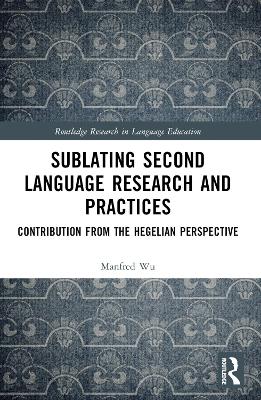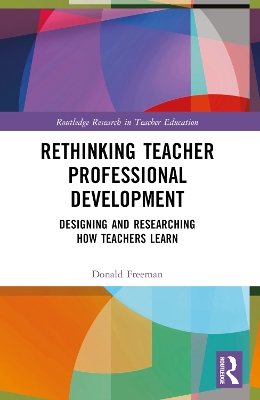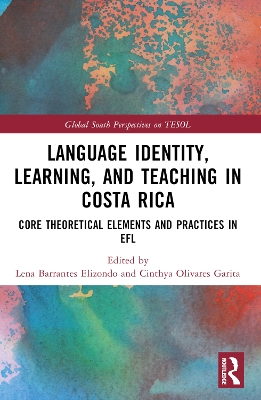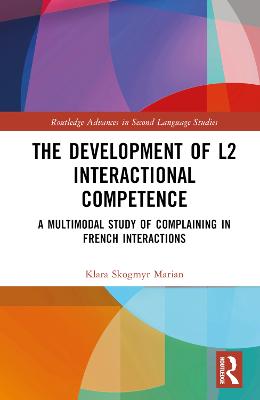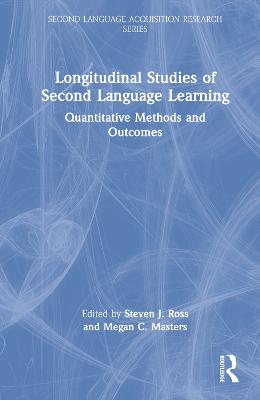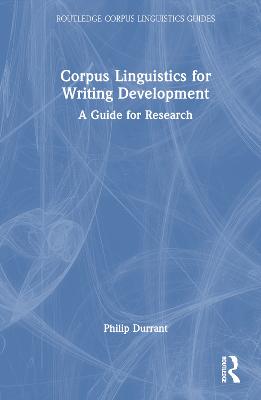Crosslinguistic Influence in L3 Acquisition
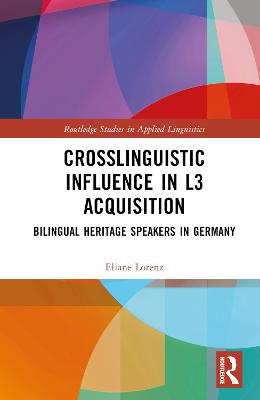 portes grátis
portes grátis
Crosslinguistic Influence in L3 Acquisition
Bilingual Heritage Speakers in Germany
Lorenz, Eliane
Taylor & Francis Ltd
11/2022
256
Dura
Inglês
9780367681210
15 a 20 dias
Descrição não disponível.
Contents
Acknowledgement
Abbreviations
List of figures
List of tables
Chapter 1: Introduction
1.1 Background and motivation
1.2 Setting the scene: second and third language acquisition
1.2.1 Language acquisition
1.2.2 Second versus third language acquisition
1.2.3 Third language learners
1.2.4 Transfer versus crosslinguistic influence
1.2.5 Advantages
1.3 Research questions
1.4 Structure of the book
Chapter 2: Acquisition of English in Germany
2.1 The role of English in Germany
2.2 Heterogeneous and diverse foreign language classrooms
2.3 Monolingual versus multilingual teaching reality in Germany and beyond
2.4 Summary
Chapter 3: Previous and current research on language acquisition
3.1 Terminology
3.2 Third versus second language acquisition
3.2.1 Emergence of the field
3.2.2 Crosslinguistic influence in third language acquisition
3.2.3 Evaluation
3.3 Bilingualism and heritage speakers
3.4 Third language acquisition of heritage bilinguals
3.5 Metalinguistic awareness
3.6 Bilingual advantages or effects
3.7 Summary
Chapter 4: Tense and aspect
4.1 General properties of tense, aspect, aktionsart
4.1.1 Tense
4.1.2 Aspect
4.1.3 Aktionsart
4.2 Tense and aspect marking in English
4.3 Tense and aspect marking in German
4.4 Tense and aspect marking in Russian
4.5 Tense and aspect marking in Turkish
4.6 Tense and aspect marking in Vietnamese
4.7 Similarities and differences in tense and aspect marking
Chapter 5: Acquisition of tense and aspect
5.1 Acquisition of tense and aspect by native speakers of English
5.2 Acquisition of tense and aspect by non-native speakers of English
5.2.1 General comments
5.2.2 The English progressive aspect
5.3 Specific foreign language learners of English
5.3.1 German learners of English
5.3.2 Russian learners of English
5.3.3 Turkish learners of English
5.3.4 Vietnamese learners of English
5.4 Summary
Chapter 6: English learner corpus based on written and spoken stories
6.1 Research design and data collection
6.1.1 Written task
6.1.2 Oral task
6.1.3 Questionnaire
6.2 Corpus data coding scheme
6.3 Profile of participants
6.3.1 General
6.3.2 Background variables
6.4 Research objectives and predictions
Chapter 7: Use of tense and aspect of monolinguals versus bilinguals
7.1 Frequency overview (written component of the learner corpus)
7.1.1 Text composition (sentences, words, verb)
7.1.2 Subject-verb-agreement
7.1.3 Copula verb be
7.1.4 Formal correctness and target-like meaning of verbs
7.2 Progressive aspect (written component of the learner corpus)
7.3 Present versus past time reference (written component of the learner corpus)
7.4 Written versus spoken production
7.4.1 Frequency overview: written texts versus oral recordings
7.4.2 Subject-verb-agreement
7.4.3 Copula verb be
7.4.4 Formal correctness and target-like meaning of verbs
7.4.5 Use of tenses and the progressive aspect
7.5 Summary
Chapter 8: Use of tense and aspect versus social variables
8.1 Formal correctness and target-like meaning of verbs
8.1.1 Formal correctness
8.1.2 Target-like meaning
8.1.3 Subject-verb-agreement
8.2 Progressive aspect
8.2.1 Formal correctness
8.2.2 Target-like meaning
8.3 Present versus past time reference
8.4 Written versus spoken production
8.4.1 Formal correctness
8.4.2 Target-like meaning
8.4.3 Subject-verb-agreement
8.5 Limitations
8.6 Summary
Chapter 9: Crosslinguistic influence in heritage speakers' L3 production
9.1 Crosslinguistic influence in third language acquisition
9.2 Language dominance
9.3 Influence of (social) background variables
9.3.1 Type of school
9.3.2 Socio-economic status
9.3.3 Number of books per household
9.3.4 Age
9.3.5 Language task assessment: written versus spoken
9.3.6 Age of onset of acquiring German
9.3.7 Attitudes towards learning English
9.4 Shortcomings and limitations
Chapter 10: Bi-/Multilingual advantages of heritage speakers
10.1 Advantages in foreign language acquisition?
10.2 Metalinguistic awareness
10.3 Learning environment in the English classroom in Germany
10.4 Implications for foreign language education
Chapter 11: Conclusion and outlook
11.1 Summary of findings
11.2 Future directions of further research
References
Acknowledgement
Abbreviations
List of figures
List of tables
Chapter 1: Introduction
1.1 Background and motivation
1.2 Setting the scene: second and third language acquisition
1.2.1 Language acquisition
1.2.2 Second versus third language acquisition
1.2.3 Third language learners
1.2.4 Transfer versus crosslinguistic influence
1.2.5 Advantages
1.3 Research questions
1.4 Structure of the book
Chapter 2: Acquisition of English in Germany
2.1 The role of English in Germany
2.2 Heterogeneous and diverse foreign language classrooms
2.3 Monolingual versus multilingual teaching reality in Germany and beyond
2.4 Summary
Chapter 3: Previous and current research on language acquisition
3.1 Terminology
3.2 Third versus second language acquisition
3.2.1 Emergence of the field
3.2.2 Crosslinguistic influence in third language acquisition
3.2.3 Evaluation
3.3 Bilingualism and heritage speakers
3.4 Third language acquisition of heritage bilinguals
3.5 Metalinguistic awareness
3.6 Bilingual advantages or effects
3.7 Summary
Chapter 4: Tense and aspect
4.1 General properties of tense, aspect, aktionsart
4.1.1 Tense
4.1.2 Aspect
4.1.3 Aktionsart
4.2 Tense and aspect marking in English
4.3 Tense and aspect marking in German
4.4 Tense and aspect marking in Russian
4.5 Tense and aspect marking in Turkish
4.6 Tense and aspect marking in Vietnamese
4.7 Similarities and differences in tense and aspect marking
Chapter 5: Acquisition of tense and aspect
5.1 Acquisition of tense and aspect by native speakers of English
5.2 Acquisition of tense and aspect by non-native speakers of English
5.2.1 General comments
5.2.2 The English progressive aspect
5.3 Specific foreign language learners of English
5.3.1 German learners of English
5.3.2 Russian learners of English
5.3.3 Turkish learners of English
5.3.4 Vietnamese learners of English
5.4 Summary
Chapter 6: English learner corpus based on written and spoken stories
6.1 Research design and data collection
6.1.1 Written task
6.1.2 Oral task
6.1.3 Questionnaire
6.2 Corpus data coding scheme
6.3 Profile of participants
6.3.1 General
6.3.2 Background variables
6.4 Research objectives and predictions
Chapter 7: Use of tense and aspect of monolinguals versus bilinguals
7.1 Frequency overview (written component of the learner corpus)
7.1.1 Text composition (sentences, words, verb)
7.1.2 Subject-verb-agreement
7.1.3 Copula verb be
7.1.4 Formal correctness and target-like meaning of verbs
7.2 Progressive aspect (written component of the learner corpus)
7.3 Present versus past time reference (written component of the learner corpus)
7.4 Written versus spoken production
7.4.1 Frequency overview: written texts versus oral recordings
7.4.2 Subject-verb-agreement
7.4.3 Copula verb be
7.4.4 Formal correctness and target-like meaning of verbs
7.4.5 Use of tenses and the progressive aspect
7.5 Summary
Chapter 8: Use of tense and aspect versus social variables
8.1 Formal correctness and target-like meaning of verbs
8.1.1 Formal correctness
8.1.2 Target-like meaning
8.1.3 Subject-verb-agreement
8.2 Progressive aspect
8.2.1 Formal correctness
8.2.2 Target-like meaning
8.3 Present versus past time reference
8.4 Written versus spoken production
8.4.1 Formal correctness
8.4.2 Target-like meaning
8.4.3 Subject-verb-agreement
8.5 Limitations
8.6 Summary
Chapter 9: Crosslinguistic influence in heritage speakers' L3 production
9.1 Crosslinguistic influence in third language acquisition
9.2 Language dominance
9.3 Influence of (social) background variables
9.3.1 Type of school
9.3.2 Socio-economic status
9.3.3 Number of books per household
9.3.4 Age
9.3.5 Language task assessment: written versus spoken
9.3.6 Age of onset of acquiring German
9.3.7 Attitudes towards learning English
9.4 Shortcomings and limitations
Chapter 10: Bi-/Multilingual advantages of heritage speakers
10.1 Advantages in foreign language acquisition?
10.2 Metalinguistic awareness
10.3 Learning environment in the English classroom in Germany
10.4 Implications for foreign language education
Chapter 11: Conclusion and outlook
11.1 Summary of findings
11.2 Future directions of further research
References
Este título pertence ao(s) assunto(s) indicados(s). Para ver outros títulos clique no assunto desejado.
Eliane Lorenz;English as an additional language;L3 acquisition;third language acquisition;heritage language;heritage speakers;bilinguals;Cross-linguistic Influence;Crosslinguistic Influence;L3 Learners;German Monolingual;Past Tenses;Bilingual Heritage;Foreign Language Acquisition;Metalinguistic Awareness;Copula Verb;Language Group;Progressive Aspect;Present Perfect;Bilingual Advantage;Additional Language Acquisition;Foreign Language English;Foreign Language Classroom;Inflectional Endings;Conditional Inference Tree;Predicted Probabilities;Pedagogical Translanguaging;Binary Logistic Regression;Stepwise Backward Model Selection
Contents
Acknowledgement
Abbreviations
List of figures
List of tables
Chapter 1: Introduction
1.1 Background and motivation
1.2 Setting the scene: second and third language acquisition
1.2.1 Language acquisition
1.2.2 Second versus third language acquisition
1.2.3 Third language learners
1.2.4 Transfer versus crosslinguistic influence
1.2.5 Advantages
1.3 Research questions
1.4 Structure of the book
Chapter 2: Acquisition of English in Germany
2.1 The role of English in Germany
2.2 Heterogeneous and diverse foreign language classrooms
2.3 Monolingual versus multilingual teaching reality in Germany and beyond
2.4 Summary
Chapter 3: Previous and current research on language acquisition
3.1 Terminology
3.2 Third versus second language acquisition
3.2.1 Emergence of the field
3.2.2 Crosslinguistic influence in third language acquisition
3.2.3 Evaluation
3.3 Bilingualism and heritage speakers
3.4 Third language acquisition of heritage bilinguals
3.5 Metalinguistic awareness
3.6 Bilingual advantages or effects
3.7 Summary
Chapter 4: Tense and aspect
4.1 General properties of tense, aspect, aktionsart
4.1.1 Tense
4.1.2 Aspect
4.1.3 Aktionsart
4.2 Tense and aspect marking in English
4.3 Tense and aspect marking in German
4.4 Tense and aspect marking in Russian
4.5 Tense and aspect marking in Turkish
4.6 Tense and aspect marking in Vietnamese
4.7 Similarities and differences in tense and aspect marking
Chapter 5: Acquisition of tense and aspect
5.1 Acquisition of tense and aspect by native speakers of English
5.2 Acquisition of tense and aspect by non-native speakers of English
5.2.1 General comments
5.2.2 The English progressive aspect
5.3 Specific foreign language learners of English
5.3.1 German learners of English
5.3.2 Russian learners of English
5.3.3 Turkish learners of English
5.3.4 Vietnamese learners of English
5.4 Summary
Chapter 6: English learner corpus based on written and spoken stories
6.1 Research design and data collection
6.1.1 Written task
6.1.2 Oral task
6.1.3 Questionnaire
6.2 Corpus data coding scheme
6.3 Profile of participants
6.3.1 General
6.3.2 Background variables
6.4 Research objectives and predictions
Chapter 7: Use of tense and aspect of monolinguals versus bilinguals
7.1 Frequency overview (written component of the learner corpus)
7.1.1 Text composition (sentences, words, verb)
7.1.2 Subject-verb-agreement
7.1.3 Copula verb be
7.1.4 Formal correctness and target-like meaning of verbs
7.2 Progressive aspect (written component of the learner corpus)
7.3 Present versus past time reference (written component of the learner corpus)
7.4 Written versus spoken production
7.4.1 Frequency overview: written texts versus oral recordings
7.4.2 Subject-verb-agreement
7.4.3 Copula verb be
7.4.4 Formal correctness and target-like meaning of verbs
7.4.5 Use of tenses and the progressive aspect
7.5 Summary
Chapter 8: Use of tense and aspect versus social variables
8.1 Formal correctness and target-like meaning of verbs
8.1.1 Formal correctness
8.1.2 Target-like meaning
8.1.3 Subject-verb-agreement
8.2 Progressive aspect
8.2.1 Formal correctness
8.2.2 Target-like meaning
8.3 Present versus past time reference
8.4 Written versus spoken production
8.4.1 Formal correctness
8.4.2 Target-like meaning
8.4.3 Subject-verb-agreement
8.5 Limitations
8.6 Summary
Chapter 9: Crosslinguistic influence in heritage speakers' L3 production
9.1 Crosslinguistic influence in third language acquisition
9.2 Language dominance
9.3 Influence of (social) background variables
9.3.1 Type of school
9.3.2 Socio-economic status
9.3.3 Number of books per household
9.3.4 Age
9.3.5 Language task assessment: written versus spoken
9.3.6 Age of onset of acquiring German
9.3.7 Attitudes towards learning English
9.4 Shortcomings and limitations
Chapter 10: Bi-/Multilingual advantages of heritage speakers
10.1 Advantages in foreign language acquisition?
10.2 Metalinguistic awareness
10.3 Learning environment in the English classroom in Germany
10.4 Implications for foreign language education
Chapter 11: Conclusion and outlook
11.1 Summary of findings
11.2 Future directions of further research
References
Acknowledgement
Abbreviations
List of figures
List of tables
Chapter 1: Introduction
1.1 Background and motivation
1.2 Setting the scene: second and third language acquisition
1.2.1 Language acquisition
1.2.2 Second versus third language acquisition
1.2.3 Third language learners
1.2.4 Transfer versus crosslinguistic influence
1.2.5 Advantages
1.3 Research questions
1.4 Structure of the book
Chapter 2: Acquisition of English in Germany
2.1 The role of English in Germany
2.2 Heterogeneous and diverse foreign language classrooms
2.3 Monolingual versus multilingual teaching reality in Germany and beyond
2.4 Summary
Chapter 3: Previous and current research on language acquisition
3.1 Terminology
3.2 Third versus second language acquisition
3.2.1 Emergence of the field
3.2.2 Crosslinguistic influence in third language acquisition
3.2.3 Evaluation
3.3 Bilingualism and heritage speakers
3.4 Third language acquisition of heritage bilinguals
3.5 Metalinguistic awareness
3.6 Bilingual advantages or effects
3.7 Summary
Chapter 4: Tense and aspect
4.1 General properties of tense, aspect, aktionsart
4.1.1 Tense
4.1.2 Aspect
4.1.3 Aktionsart
4.2 Tense and aspect marking in English
4.3 Tense and aspect marking in German
4.4 Tense and aspect marking in Russian
4.5 Tense and aspect marking in Turkish
4.6 Tense and aspect marking in Vietnamese
4.7 Similarities and differences in tense and aspect marking
Chapter 5: Acquisition of tense and aspect
5.1 Acquisition of tense and aspect by native speakers of English
5.2 Acquisition of tense and aspect by non-native speakers of English
5.2.1 General comments
5.2.2 The English progressive aspect
5.3 Specific foreign language learners of English
5.3.1 German learners of English
5.3.2 Russian learners of English
5.3.3 Turkish learners of English
5.3.4 Vietnamese learners of English
5.4 Summary
Chapter 6: English learner corpus based on written and spoken stories
6.1 Research design and data collection
6.1.1 Written task
6.1.2 Oral task
6.1.3 Questionnaire
6.2 Corpus data coding scheme
6.3 Profile of participants
6.3.1 General
6.3.2 Background variables
6.4 Research objectives and predictions
Chapter 7: Use of tense and aspect of monolinguals versus bilinguals
7.1 Frequency overview (written component of the learner corpus)
7.1.1 Text composition (sentences, words, verb)
7.1.2 Subject-verb-agreement
7.1.3 Copula verb be
7.1.4 Formal correctness and target-like meaning of verbs
7.2 Progressive aspect (written component of the learner corpus)
7.3 Present versus past time reference (written component of the learner corpus)
7.4 Written versus spoken production
7.4.1 Frequency overview: written texts versus oral recordings
7.4.2 Subject-verb-agreement
7.4.3 Copula verb be
7.4.4 Formal correctness and target-like meaning of verbs
7.4.5 Use of tenses and the progressive aspect
7.5 Summary
Chapter 8: Use of tense and aspect versus social variables
8.1 Formal correctness and target-like meaning of verbs
8.1.1 Formal correctness
8.1.2 Target-like meaning
8.1.3 Subject-verb-agreement
8.2 Progressive aspect
8.2.1 Formal correctness
8.2.2 Target-like meaning
8.3 Present versus past time reference
8.4 Written versus spoken production
8.4.1 Formal correctness
8.4.2 Target-like meaning
8.4.3 Subject-verb-agreement
8.5 Limitations
8.6 Summary
Chapter 9: Crosslinguistic influence in heritage speakers' L3 production
9.1 Crosslinguistic influence in third language acquisition
9.2 Language dominance
9.3 Influence of (social) background variables
9.3.1 Type of school
9.3.2 Socio-economic status
9.3.3 Number of books per household
9.3.4 Age
9.3.5 Language task assessment: written versus spoken
9.3.6 Age of onset of acquiring German
9.3.7 Attitudes towards learning English
9.4 Shortcomings and limitations
Chapter 10: Bi-/Multilingual advantages of heritage speakers
10.1 Advantages in foreign language acquisition?
10.2 Metalinguistic awareness
10.3 Learning environment in the English classroom in Germany
10.4 Implications for foreign language education
Chapter 11: Conclusion and outlook
11.1 Summary of findings
11.2 Future directions of further research
References
Este título pertence ao(s) assunto(s) indicados(s). Para ver outros títulos clique no assunto desejado.
Eliane Lorenz;English as an additional language;L3 acquisition;third language acquisition;heritage language;heritage speakers;bilinguals;Cross-linguistic Influence;Crosslinguistic Influence;L3 Learners;German Monolingual;Past Tenses;Bilingual Heritage;Foreign Language Acquisition;Metalinguistic Awareness;Copula Verb;Language Group;Progressive Aspect;Present Perfect;Bilingual Advantage;Additional Language Acquisition;Foreign Language English;Foreign Language Classroom;Inflectional Endings;Conditional Inference Tree;Predicted Probabilities;Pedagogical Translanguaging;Binary Logistic Regression;Stepwise Backward Model Selection

